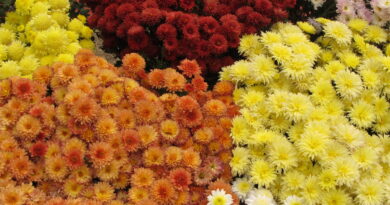Garden roses
Garden Roses: Nature’s Timeless Elegance
Introduction
In the heart of blooming gardens, where colors intertwine with fragrances and beauty knows no bounds, garden roses stand as unrivaled ambassadors of nature’s grace and charm. Unlike their wild counterparts, garden roses are the result of generations of careful cultivation, embodying the epitome of floral perfection. In this exploration, we will wander through the enchanting world of garden roses, tracing their history, unraveling their diversity, and delving into the artistry and passion that goes into their cultivation, making them the beloved queens of gardens around the globe.
The Origin and Evolution of Garden Roses
The story of garden roses is as old as human civilization itself. Originating in Asia around 5000 years ago, roses have been cherished for their beauty, fragrance, and symbolic significance. The cultivation of roses evolved over centuries, resulting in a rich tapestry of species and varieties. The transformation from wild roses to the diverse range of garden roses we see today is a testament to the artistry and dedication of horticulturists and rose enthusiasts throughout history.
Diversity in Blooms: Types of Garden Roses
Garden roses boast a remarkable diversity, with each variety bearing its unique allure. Hybrid Tea Roses, characterized by their elegant, high-centered blossoms, are popular for their classic beauty and are often used as cut flowers. Floribunda Roses, on the other hand, present clusters of blooms, creating a profusion of colors in the garden. Grandiflora Roses combine the traits of Hybrid Tea and Floribunda roses, producing large, showy blooms on tall, hardy bushes. Old Garden Roses, a treasure trove of heritage varieties, evoke the charm of bygone eras with their rich fragrances and timeless elegance. Climbing Roses add a touch of romance, adorning walls, arbors, and trellises with cascades of blossoms, creating a picturesque ambiance in gardens.
The Art and Science of Rose Cultivation
Growing garden roses is a delicate blend of art and science. Experienced gardeners employ techniques like pruning, deadheading, and proper feeding to encourage healthy growth and prolific flowering. Selective breeding plays a pivotal role, with hybridizers meticulously cross-pollinating different rose varieties to create new and enchanting breeds. The pursuit of the perfect bloom, one that combines exquisite form, captivating fragrance, and vibrant colors, fuels the passion of rose cultivators, resulting in the continuous evolution of the world of garden roses.
Symbolism and Cultural Significance
Roses, including garden roses, have been symbols of love, beauty, and various emotions in cultures around the world. In ancient civilizations, roses were associated with goddesses such as Aphrodite and Venus, representing love and desire. Different colors of roses convey distinct messages: red roses symbolize love and passion, while white roses represent purity and innocence. The cultural significance of roses continues to influence art, literature, and celebrations, making them timeless symbols of human expression and connection.
Garden Roses in Modern Landscapes: Aesthetic Marvels
In contemporary landscapes, garden roses play a pivotal role in elevating the aesthetic appeal of gardens, parks, and public spaces. Their vibrant hues and captivating fragrances draw visitors, creating a sensory experience that transcends the visual realm. Landscapers and garden designers utilize garden roses strategically, incorporating them into various themes, such as formal gardens, cottage gardens, and urban landscapes, enhancing the ambiance and adding a touch of elegance to outdoor spaces.
Challenges and Conservation Efforts
Despite their enduring popularity, garden roses face challenges such as pests, diseases, and changing climate conditions. Rose enthusiasts and horticulturists are actively engaged in conservation efforts to preserve rare and endangered rose varieties. Botanical gardens and dedicated rose preservation initiatives are instrumental in safeguarding the genetic diversity of garden roses, ensuring that future generations can continue to enjoy the beauty and heritage of these exquisite blooms.
Conclusion: The Endless Blooms of Beauty
Garden roses, with their timeless elegance, captivating fragrances, and diverse varieties, are not merely flowers; they are living works of art that weave poetry into the tapestry of nature. In their delicate petals and alluring scents, they carry the echoes of centuries, embodying the shared human appreciation for beauty and love. As we stroll through gardens adorned with these exquisite blooms, we are reminded of the enduring connection between humanity and nature. Garden roses, in all their splendor, stand as ambassadors of the profound joy and inspiration that the natural world offers, inviting us to revel in the endless blooms of beauty that grace our lives.



